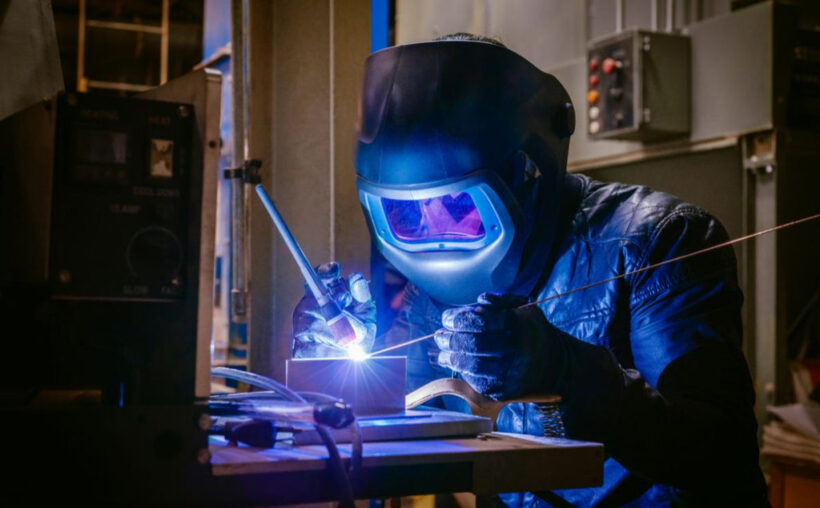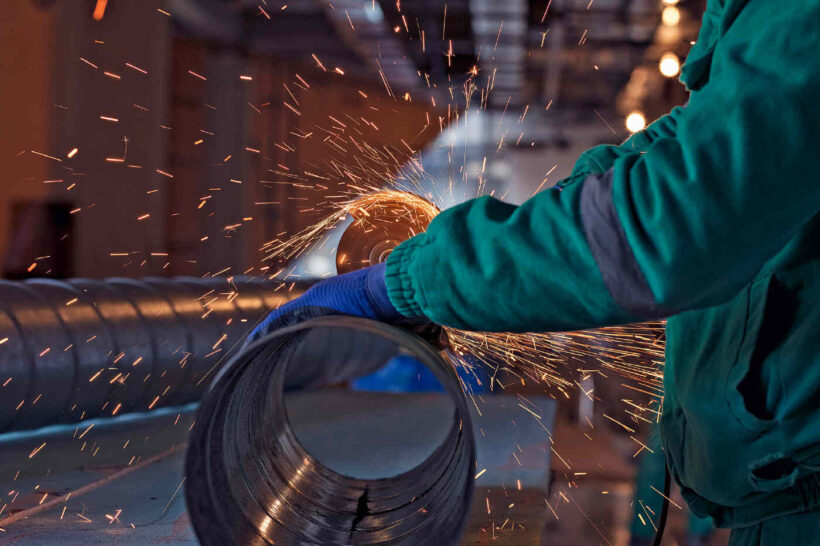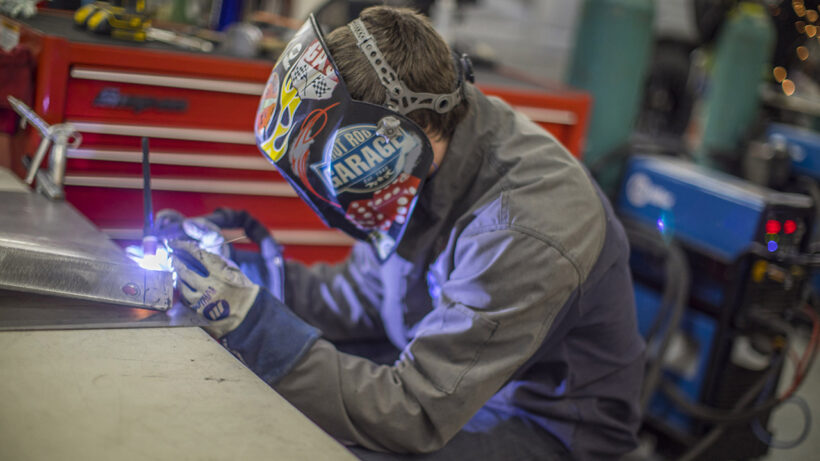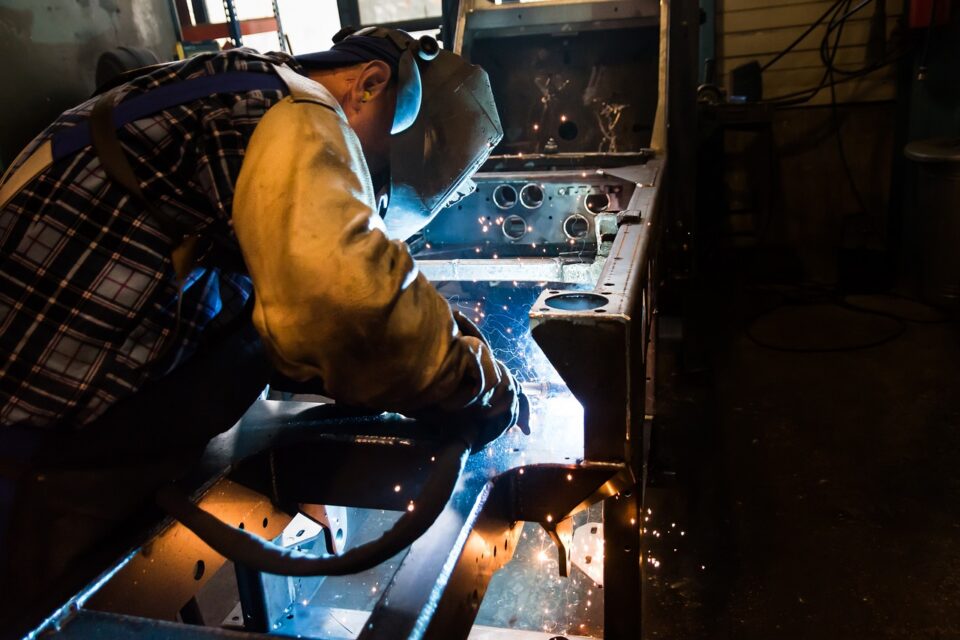When it comes to exhaust welding, there are a number of options available. Two of the most popular are MIG and TIG.
Although these options have certain similarities, there are a number of differences that truly set them apart and make one option potentially better for certain projects than the other.
This article will outline a few of those primary differences to help you choose the best option for your exhaust system. Let’s get stuck in!
What is TIG?
TIG (tungsten inert gas) welding is another type of arc welding involving a non-consumable tungsten electrode that creates an electric arc. Contrary to MIG, which uses a consumable electrode, TIG does not require any filler metal to form a weld.
Instead, the head generated from the electrical arc is used to melt the base metal and join it together. For this reason, TIG welding stainless steel is a popular choice for working on stainless steel exhaust systems. It produces aesthetically pleasing results that are reliable and long-lasting.
What is MIG?
MIG, which stands for metal inert gas, is an arc weld method that relies on a consumable electrode to produce an electric arc. The electrical current creates heat that melts the electrode and the joint metal together to form a weld bead.
This option is often used on stainless steel exhaust systems because the welds are clean and can be completed very quickly.
What are the Main Differences Between MIG and TIG?
As previously mentioned, despite certain similarities and producing similar results, MIG and TIG have a few differences that are worth considering before choosing the right one for your project. This includes:
- Heat input: Because MIG requires more heat, the risk of base metal damage is higher. Although, any kind of arc weld can potentially create heat-affected zones.
- Control: TIG welding gives the welder more control over the heat input and weld pool, which can yield better results. This comes in handy when working with thin sheet metal, such as stainless steel exhaust systems, where there is little room for error.
- Speed: When speed matters, MIG welding is generally preferred since it requires less time. However, this also generally means lower-quality work.
- Cost: Last but not least, it can also be cheaper to opt for MIG welding because of the reduced time it takes. Of course, for people who value quality results, TIG welding could be well worth the extra money.
Does the Type of Welding Affect Exhaust Performance?

A common question people have when choosing which route they will take for their exhaust system welding is whether their choice will affect the performance of their exhaust. The truth is that the type of welding done on the exhaust system can have huge effects on its performance.
For instance, MIG welding is known for pricing more seamless and efficient welding, but with increased heat input, it also increases the risk of warpage.
However, TIG welding is far superior when it comes to accuracy and control, which can yield a much better result in terms of performance. Ultimately, the type of welding used for an exhaust system will have a significant impact on its performance and longevity.
When To Use MIG vs. TIG Welding
Experienced welders use both techniques depending on the application.
While you might assume that the finer finish achieved by TIG welding means that it’s always the weld of choice in professional settings, it actually depends on the weld’s circumstances and purpose. MIG welds are sometimes preferable, even for high-level welders.
Here’s a breakdown of the applications for each type.
MIG Applications

- Welding thick materials: MIG welds produce sufficient heat to bond thicker sheets of metal, although techniques like stick welding may be preferred for some jobs. As thicker metals are sometimes tackled on-site rather than in the shop, the versatility of MIG welding is sometimes preferred to TIG.
- Operating in tricky positions: TIG welds often require the user to sit down (to use the pedal) and to work with both hands. If a weld needs to be performed in a hard-to-reach place, MIG may be the preferred technique.
- High-volume work: MIG welds are much quicker and easier to perform, so if you’re looking to raise your output and the finish isn’t as important, this technique is a great choice.
- Welds that require longer runs: As MIG welding uses a long wire feed and doesn’t need to be replenished as often as TIG, it’s more appropriate for long runs. There’s less risk of overheating, and TIG welders struggle to keep the weld puddle moving along with the longer runs.
- Amateur/hobbyist work: MIG is a much simpler technique, and it’s recommended that hobbyists master this process before they attempt TIG welds.
TIG Applications

- Welding thin materials: TIG welding allows greater precision and makes it easier to bond thinner sheets of metal.
Professional work: This is typically the process used by professionals when a job needs an attractive finish – even when the weld is technically strong, MIG can leave a sloppy-looking finish. - Delicate welds: The welder has greater control over the weld when using a TIG setup. This makes it much more effective for delicate jobs where the finish is a priority, and MIG welds might damage the components.
- Shorter runs: When there’s less risk of overheating or running out of wire feed, TIG is considered preferable.
- Industrial or shop settings: Professional welders tend to use the TIG technique because it produces a better finish for their customers: The setup tends to require a workshop, which is why it’s more common among professionals than hobbyists.
- Non-ferrous metal welding: TIG welds are better for metals that aren’t mostly iron-based – aluminum, titanium, and other non-ferrous metals bond much more effectively with this process.
Final Thoughts
Overall, both MIG and TIG welding can be viable options for exhaust welding, but before settling on one, understanding the pros and cons of each option is essential. You should never attempt a weld if you’re not well-versed on the subject and understand how to use specialist equipment.
While they will both offer different advantages, either method is capable of producing appealing results with the right professional doing it.


